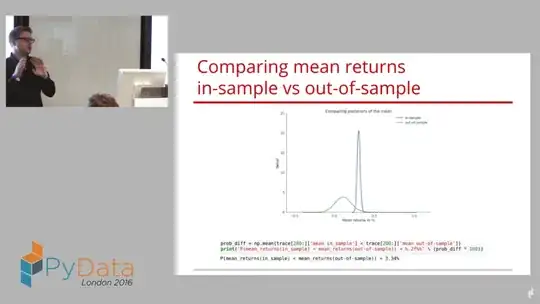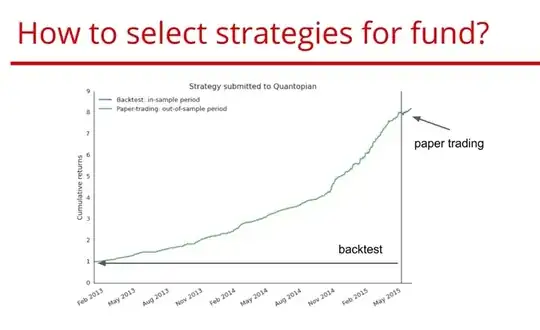I'm watching this video on Bayesian modelling for the stock market by Thomas Wiecki, Thomas has a slide with two posterior distribution over the mean parameter in his stock return model. Around 18:26 we see this slide:
The phrase “in-sample” and “out-of-sample” in regard to a posterior distribution, both in regard to the same latent variable, confuses me.
If one wants to look at the latent variables, the way I understand it, one can:
- Look at the prior of a latent variable, which is designed by the user.
- Look at the posterior of a latent variable, which one can obtain after observing some data.
At no point in the Bayesian workflow does an “out-of-sample” vs “in-sample posterior” come up, just posterior vs prior.
Question: What does “in-sample posterior” vs “out-of-sample posterior” mean?

